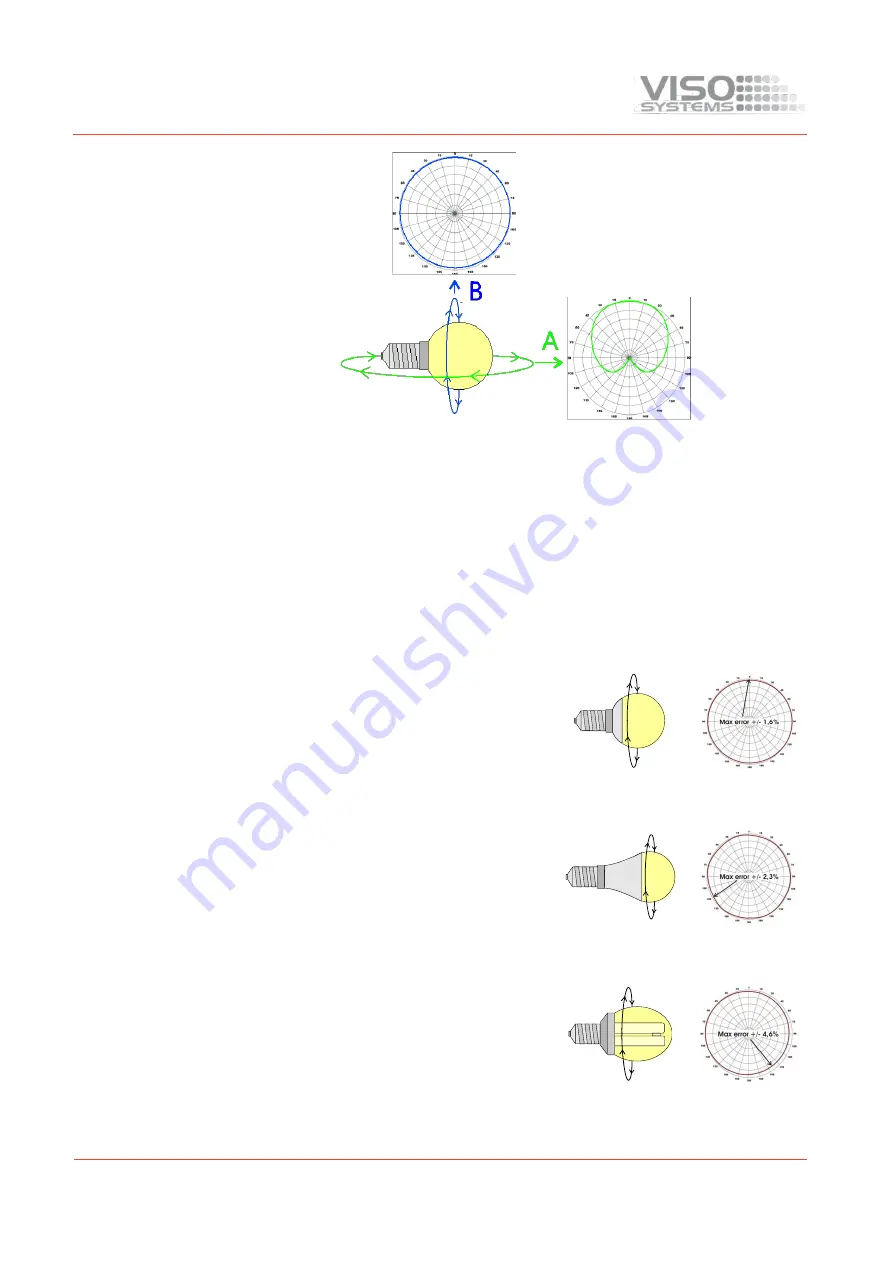
17
The
principle behind it is based on a consideration that the opposite field “B” is
circular (see in the picture above). Most of the light sources and fixtures have
nonuniform circular “A” and “B” fields.
In some particular cases the deviation from a circular
uniformity of the “B” field is
caused by a physical geometry of the light source.
A series of test measurements of different types of light sources was made to account
for such errors.
The total flux accuracy is calculated for each type of light sources by summation of the
3 kinds of errors: Spectrometer Intensity Error + Sensor Error + Circular Field Error =
Total Lumen Accuracy
1.
A LED bulb with a frosted glass
cone
.
For this type of light source the
“B” field is almost completely
circular and therefore it has a
small error when measured only
using the “A” field.
Accuracy =
0.5% + 2% + 1.6% < +/- 4.1%
2.
A LED bulb with a frosted
plastic cone.
The plastic cone exposes the
led. Thus it has a slightly
deviated distribution of the “B”
field, which results in a higher
error value
Accuracy =
0.5% + 2% + 2.3% < +/- 4.8%
3.
Fluorescent bulb with a frosted
cone.
The large field of light from a
fluorescent bulb and a
nonuniform wearing of the glass
tubes increase the error
compared to LED.
Accuracy =
0.5% + 2% + 4.6% < +/- 7.1%



















